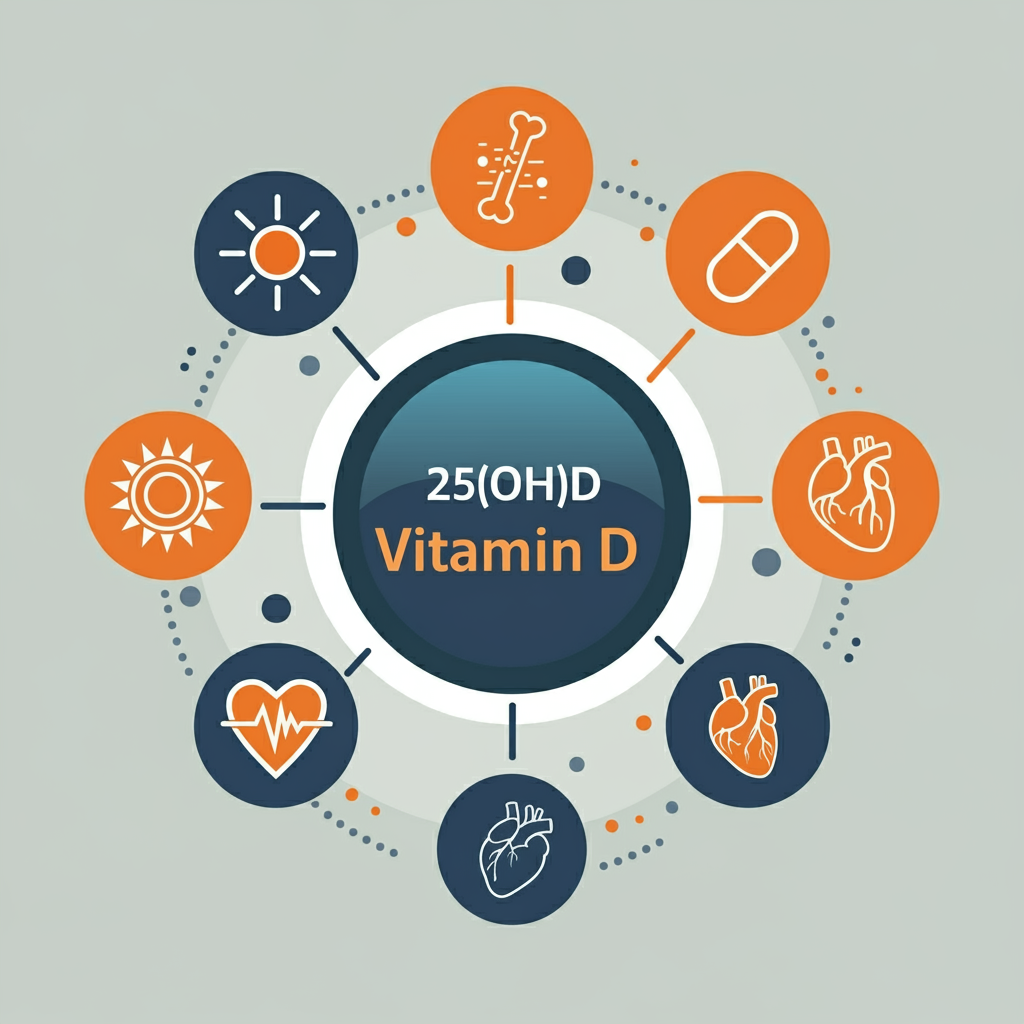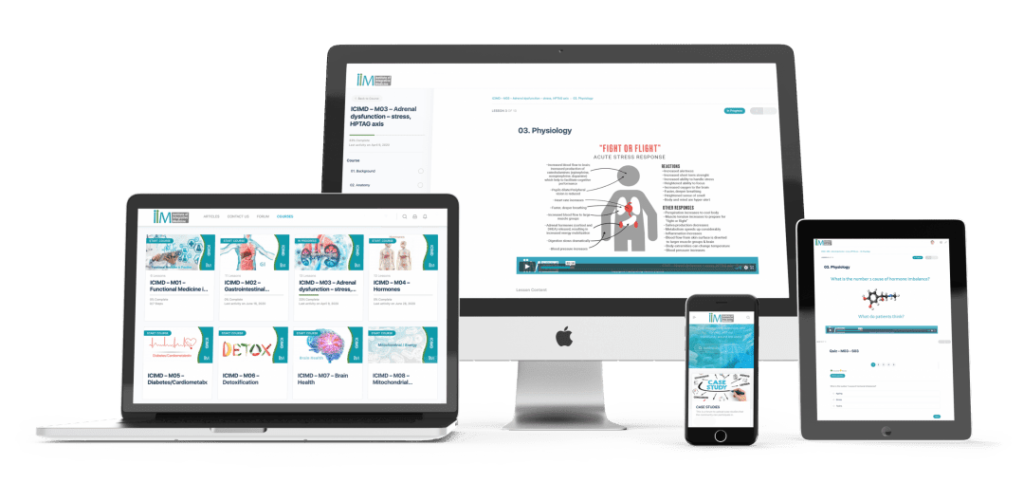Vitamin D: Guidelines for Medical Professionals and Patient Care Associates
The Endocrine Society’s updated clinical practice guideline on vitamin D supplementation offers valuable insights, and underscores the importance of considering individual patient factors when recommending vitamin D supplementation. The guideline highlights potential benefits for specific groups such as children, older adults, pregnant women, and those with prediabetes. As research continues to address current knowledge gaps, these guidelines will evolve, further optimising vitamin D’s role in disease prevention.

Vitamin D, a steroid hormone, is crucial for calcium and phosphorus regulation and skeletal integrity. It’s unique because the body can produce this vitamin through sun exposure, or it can be obtained from diet and supplements. Lowered vitamin D levels are common worldwide, leading to increased interest in its role beyond bone health, particularly in chronic disease prevention. Observational studies have linked low vitamin D levels to higher risks of conditions like cancer, infectious diseases, and cardiometabolic disorders. However, clinical trials testing vitamin D supplementation for preventing these conditions have shown varied results.
To address this, the Endocrine Society has updated its 2011 clinical practice guideline on vitamin D, considering new information from numerous clinical trials. A systematic review, published in the Journal of Clinical Endocrinology & Metabolism, was conducted to support the development of this guideline, focusing on the benefits and harms of vitamin D supplementation for disease prevention across different age groups and conditions.
Insights to Support the Endocrine Society’s Vitamin D Guidelines
The systematic review, adhering to the PRISMA (Preferred Reporting Items for Systematic Reviews and Meta-analyses) statement, analysed 151 studies addressing 14 clinical questions prioritised by the Endocrine Society guideline panel. These questions encompassed vitamin D use in children, pregnant women, adults across different age groups, and individuals with prediabetes, alongside questions related to dosing and screening.
Review Findings:
Children and Adolescents (1-18 years):

Some low-certainty evidence suggests that taking vitamin D without first confirming a deficiency (known as empiric supplementation) may reduce the chances of respiratory tract infections symptoms (RTIs) from occurring. However, since the evidence is not very strong, the analysis couldn’t definitively establish whether vitamin D supplementation directly prevents the occurrence of RTIs or simply reduces their frequency.
Nonpregnant Adults (<50 years):
Empiric vitamin D supplementation did not show a statistically significant impact on bone mineral density (BMD) or the risk of developing RTIs in healthy adults aged 19 to 74 years. However, a randomised controlled trial by Nowak et al. (2016) investigated the effect of vitamin D3 supplementation on self-perceived fatigue in adults presenting with fatigue and vitamin D levels below 20 ng/mL. A correlation was observed between the improvement in fatigue scores and the increase in 25(OH)D levels, and the authors concluded that vitamin D3 supplementation could potentially improve self-perceived fatigue in adults with insufficient vitamin D levels and fatigue.
Adults (50-74 years):
No significant association was observed between vitamin D supplementation and a reduced risk of cardiovascular events, cancer, fractures, or kidney disease. However, vitamin D supplementation was linked to an increased risk of kidney stones. Vitamin D may increase the risk of kidney stones by raising calcium levels in the blood, leading to higher amounts of calcium in the urine. The excess calcium can combine with other substances to form kidney stones. It’s worth noting that many participants in these studies already had sufficient baseline vitamin D levels, likely due to adherence of recommended intakes in a generally healthy population.
Adults (≥75 years):

A very small, but potentially clinically important, reduction in mortality was observed with vitamin D supplementation in this age group. Additionally, a decrease in the incidence of falls was noted, particularly in studies involving calcium co-administration and standard vitamin D doses. Although vitamin D alone did not significantly reduce fracture incidence, a lower rate of fractures was noted when it was combined with calcium.
Pregnant Women:
Low-certainty evidence suggests possible benefits of vitamin D supplementation on various maternal, foetal, and neonatal outcomes, including a potential reduction in pre-eclampsia, intrauterine mortality, neonatal mortality, preterm birth, and small-for-gestational-age births. However, further research and trials are needed to confirm these findings.
Adults with Prediabetes:
Vitamin D supplementation was associated with a reduced risk of developing type 2 diabetes. Moreover, positive effects were observed on fasting blood glucose and 2-hour blood glucose levels after an oral glucose tolerance test, suggesting a potential role for vitamin D in improving glycaemic control in this population. It is important to note that this review specifically focuses on individuals without pre-existing conditions like skeletal disease, lung disease, acute illness or other disorders affecting Vitamin D absorption.
Regarding dosing, the review highlights that higher intermittent doses of vitamin D may be linked to an increased risk of falls, indicating daily dosing as a possibly safer and more effective approach.
Strengths, Limitations, and Future Directions
The review had several strengths, including a comprehensive search strategy, robust methodology, and the use of GRADE (Grading of Recommendations Assessment, Development and Evaluation) to assess the certainty of evidence.

However, some limitations need acknowledgment. A significant limitation was the frequent lack of reporting on baseline and post-supplementation vitamin D levels in the included studies. Additionally, most trials included in the review compared vitamin D supplementation to control groups not receiving vitamin D, making it difficult to completely account for vitamin D intake from diet and sun exposure.
The review highlights the need for further research to establish the optimal vitamin D levels for different health outcomes, the impact of supplementation in individuals with varying vitamin D statuses, and the long-term effects of supplementation on chronic disease risks. Visit the IHP Mastery Program for more integrative insights on vitamin D supplementation.
Conclusion
Understanding the nuances of vitamin D supplementation, as highlighted in the Endocrine Society’s updated clinical practice guideline, can empower healthcare professionals, including patient care associates, to provide informed guidance and support to patients across various demographics. The findings suggest potential benefits for specific populations, including children, older adults, pregnant women, and individuals with prediabetes. This emphasises the need for personalised approaches, considering individual patient characteristics and risk factors, when making decisions about vitamin D supplementation. The variation in efficacy and recommended dosages between different demographics contributes to the individualised approach. Future research, addressing the current limitations and knowledge gaps, will be crucial in refining these recommendations and optimising the use of vitamin D for disease prevention.
How do I Become a Functional Medicine Practitioner to learn more about Vitamin D Supplementation?

The Institute of Integrative Medicine is a global leader in the field of Integrative Medicine Education. Integrative medicine aims to be at the forefront of modern technology and new discoveries and focuses on the root cause of disease. Understanding the latest clinical practice guidelines, such as those from the Endocrine Society, can help you make informed decisions about supplementation for different patient populations, including children, pregnant women, older adults, and those with prediabetes. We offer certified online courses helping you to take charge of your practice and improve the quality of life for your patients. Find out more about the courses we offer today!

